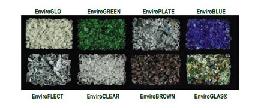In today’s fast-paced world, the concept of home and workspaces has evolved beyond aesthetics and functionality. Modern architecture is now deeply intertwined with human well-being, sustainability, and environmental consciousness. Wellness architecture, a movement that integrates holistic living principles with green innovation, is shaping the future of residential, hospitality, and commercial spaces. Firms like Vera Iconica Architecture have been at the forefront of this transformation, designing spaces that prioritize health, harmony, and ecological responsibility.
As sustainability and well-being become essential elements of modern living, the built environment must reflect these values. The fusion of wellness-focused design with eco-conscious innovations is paving the way for healthier, more resilient communities.
The Philosophy Behind Wellness Architecture
Wellness architecture is rooted in the idea that the spaces people inhabit should nurture both body and mind. This approach goes beyond traditional green building practices by incorporating elements that actively promote physical and mental well-being.
Key principles of wellness architecture include air and water quality optimization, natural light integration, biophilic design, and non-toxic materials. By ensuring that buildings support human health on multiple levels, architects create environments that enhance mood, reduce stress, and improve overall quality of life.
Sustainable Materials and Eco-Friendly Innovations
The materials used in construction significantly impact the health of both the occupants and the environment. Forward-thinking architects and designers are now turning to non-toxic, sustainable materials that contribute to better indoor air quality while reducing carbon footprints.
Natural materials such as reclaimed wood, bamboo, and low-VOC (volatile organic compound) paints are replacing conventional, chemically treated products. Additionally, advancements in sustainable insulation, energy-efficient glazing, and breathable wall systems contribute to healthier indoor environments.
Green innovation has also led to the rise of self-sustaining buildings that harness renewable energy sources. Solar panels, green roofs, and rainwater harvesting systems are becoming integral to modern wellness-focused structures. These features not only reduce environmental impact but also create self-sufficient living spaces that align with holistic living principles.
Biophilic Design and Connection to Nature
A fundamental aspect of wellness architecture is biophilic design, which seeks to strengthen the human-nature connection within built environments. This approach incorporates natural elements such as indoor gardens, water features, and ample daylight to create a sense of tranquility and balance.
Studies have shown that exposure to natural elements enhances cognitive function, reduces stress, and improves mood. By integrating organic shapes, earthy textures, and open spaces, wellness architecture fosters a deep connection between individuals and their surroundings.
Additionally, incorporating outdoor living areas, rooftop gardens, and walking paths within architectural designs encourages movement and engagement with nature. These features make it easier for residents, employees, and visitors to maintain an active lifestyle while benefiting from the calming effects of the outdoors.
The Role of Smart Technology in Wellness Architecture
Technology is playing a crucial role in advancing wellness architecture. Smart home automation systems allow residents to control lighting, air filtration, and temperature settings in ways that enhance comfort and well-being.
Air purification systems with real-time monitoring ensure that indoor environments remain free from pollutants and allergens. Circadian lighting, which mimics natural daylight patterns, helps regulate sleep cycles and improve energy levels throughout the day.
In commercial and hospitality spaces, AI-driven systems optimize energy usage, ensuring efficiency while maintaining optimal indoor conditions for guests and employees. These innovations align with the core philosophy of wellness architecture—creating environments that actively support human health.
Wellness in Hospitality and Spa Design
Wellness architecture is transforming the hospitality industry, with hotels, spas, and resorts embracing design principles that prioritize relaxation and rejuvenation. Sustainable retreats, eco-friendly spa facilities, and nature-integrated accommodations are becoming sought-after experiences for travelers looking to escape the stresses of daily life.
Elements such as thermal baths, natural hot springs, and botanical treatment rooms are now designed with sustainability in mind, ensuring that the healing power of nature remains intact. Resorts that incorporate holistic wellness concepts, from organic farm-to-table dining to immersive meditation spaces, offer guests a complete mind-body experience.
By focusing on the synergy between well-being and environmental stewardship, hospitality spaces can create meaningful experiences that align with the growing demand for conscious, health-oriented travel.
A Future Built on Wellness and Sustainability
As people become increasingly aware of how their surroundings affect their well-being, the demand for wellness architecture will continue to grow. The combination of holistic design, sustainable innovation, and smart technology is reshaping the way individuals interact with the spaces around them.
By embracing this architectural shift, communities can move toward a future where homes, workplaces, and hospitality spaces not only meet functional needs but also enhance health, happiness, and sustainability. Architects, designers, and developers who integrate wellness principles into their projects will play a pivotal role in shaping a healthier world—one that nurtures both people and the planet.




